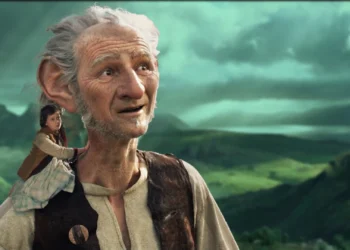Rediscovering Classic 2D: The Charm That Never Fades
Dive into the enchanting world of animation where timeless 2D techniques continue to captivate audiences, even amidst the rise of cutting-edge digital innovations.
1. The Resurgence of 2D Animation
While the animation industry is rapidly evolving with CGI and other advanced technologies, classic 2D animation retains a special place in the hearts of many. Its unique artistic expression and nostalgic appeal provide a refreshing contrast to the large-scale digital productions dominating the box office. This enduring popularity ensures that 2D animation continues to thrive in niche markets.
2. Market Growth in the Animation Sector
The U.S. animation market is experiencing substantial growth, driven by increasing demand for high-quality animated content across both entertainment and gaming. Industry analysis projects the market will more than double in size over the next decade.
3. Factors Driving Animation’s Growth
Several factors contribute to the animation market’s impressive growth trajectory. These include the increasing demand for high-quality content and rapid advancements in technology. Major North American studios are also playing a crucial role, leading innovation and shaping the future of animation.
CGI Revolution: Crafting Realism in Animated Worlds
Explore how CGI has revolutionized animated film, pushing the boundaries of realism and transforming visual storytelling for audiences worldwide.
1. The Dawn of CGI Animation
The introduction of computer-generated imagery (CGI) has fundamentally reshaped the landscape of animated film, enabling filmmakers to create characters and environments with unprecedented realism. This transformation began notably with Pixar’s “Toy Story” in 1995, marking the first full-length feature entirely crafted using CGI. Since then, the animation industry has rapidly embraced technological advancements.
2. Technological Advancements Driving Realism
Recent years have witnessed a significant surge in the demand for high-quality CGI animation across various sectors, including film, television, and advertising. This demand is fueled by technological innovations such as depth sensors and virtual reality, which enhance the realism of facial expressions, motion capture, and environmental design in 3D animation.
3. Streamlined Production and Creative Ambitions
Top animation studios in the U.S. are now leveraging cutting-edge pipelines from initial concept to final rendering, achieving photorealistic visuals that captivate audiences. This push towards realism not only elevates the art of visual storytelling but also streamlines production cycles, allowing both established studios and independent creators to pursue more ambitious and imaginative projects.
Cartoon Evolution: From Hand-Drawn Heroes to Digital Darlings
Embark on a journey through the enchanting world of animation, where artistry meets technology, and stories come alive!
1. The Reign of Animated Blockbusters
Animated films have consistently captivated audiences worldwide, evolving from traditional hand-drawn techniques to sophisticated CGI. This evolution is not just about visuals; it’s also reflected in box office numbers. Newer films are setting new benchmarks for commercial success in the animation industry.
2. Box Office Performance: A Key Indicator
The financial performance of animated movies offers insight into shifting audience preferences and the impact of technological advancements. As new animation techniques emerge, they attract a wider and more diverse audience, driving box office success.
3. From Classics to Contemporary Hits
The animation landscape has transformed significantly, with advancements in CGI and storytelling techniques attracting diverse audiences. The financial success of these films mirrors the industry’s progress, indicating a bright future for animated content.
4. The Future of Animation
As technology continues to advance, the possibilities for animated storytelling are endless. These films are not just entertainment; they are a reflection of our evolving culture and technological capabilities.
3D Animation Mastery: Building Characters with Depth and Emotion
Explore how the 3D animation industry leverages technological advancements to create emotionally resonant characters.
1. The Rise of Emotionally Expressive Characters
The 3D animation industry is rapidly evolving, driven by advancements in visual effects technology. This evolution is particularly noticeable in character development, where there’s a distinct shift towards creating more emotionally expressive digital characters. These characters are no longer just visually appealing; they’re designed to evoke deeper emotional connections with audiences, enhancing the storytelling experience.
2. Technological Innovations Driving Growth
Real-time animation engines are at the forefront of this transformation, enabling animators to create lifelike characters more quickly. This speed and efficiency allow for greater focus on the nuances of character expression and emotional depth. Furthermore, AI-assisted animation workflows are streamlining the process, making it easier for studios to produce high-quality animated content that resonates with diverse viewers, especially on streaming platforms.
3. Market Growth and Future Projections
The market size of the 3D animation industry reflects this growth and creative ambition. As shown in the following table, the market is projected to experience significant expansion through the end of the decade. The increasing demand for sophisticated animated content across various sectors, including entertainment, education, and healthcare, further fuels this growth.
4. Broadening Applications Beyond Entertainment
The impact of 3D animation extends far beyond the entertainment industry. It’s increasingly being utilized in education, healthcare simulations, and virtual events. This broader application underscores the versatility and growing importance of 3D animation in various sectors, contributing to the overall expansion and innovation within the field.
Q&A
Question 1: What factors are contributing to the significant growth of the animation market?
Answer: Several factors drive the animation market’s expansion. These include increasing demand for high-quality content across entertainment and gaming, rapid technological advancements, and the leading role of major North American studios in innovation. Additionally, the rising popularity of streaming platforms and the integration of technologies like VR and AR are significant contributors.
Question 2: How does stop-motion animation differentiate itself in the current animation market?
Answer: In a market increasingly dominated by digital animation, stop-motion animation stands out due to its handcrafted, artisanal nature. This unique, tangible quality offers a refreshing contrast, allowing creators to differentiate their work and connect with audiences on a deeper level by emphasizing artistry in character creation.
Question 3: What is the significance of Pixar’s “Toy Story” (1995) in the context of CGI animation?
Answer: “Toy Story” marked a pivotal moment, being the first full-length feature film entirely created using CGI. This film’s success demonstrated the potential of CGI and significantly impacted the animation industry’s rapid adoption of this technology and its subsequent advancements.
Question 4: Beyond entertainment, what are some other applications of 3D animation?
Answer: 3D animation’s applications extend beyond entertainment. It’s increasingly used in education (creating engaging learning materials), healthcare simulations (training medical professionals), and virtual events (enhancing immersive experiences). This broad application highlights its versatility and growing importance across various sectors.













